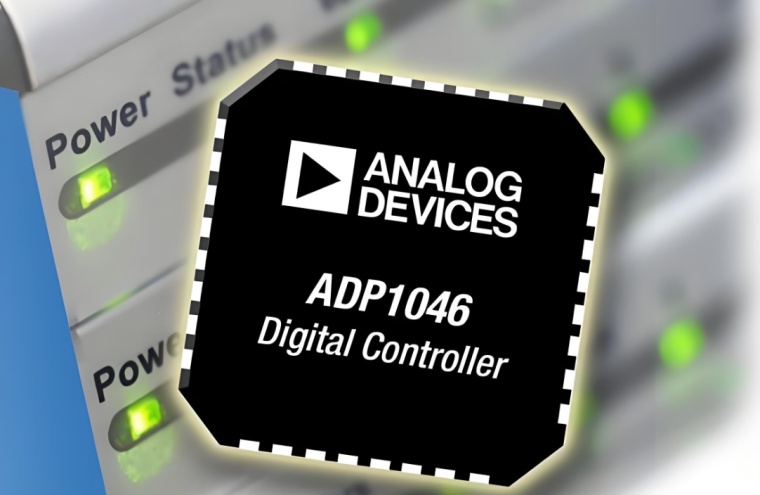**LT4295IUFD#PBF: A Comprehensive Technical Overview and Application Guide for IEEE 3bt PoE++ Systems**
The evolution of Power over Ethernet (PoE) has been a cornerstone in simplifying the deployment and powering of a vast array of network-connected devices. With the ratification of the **IEEE 802.3bt standard**, commonly known as PoE++**,** the available power delivered to powered devices (PDs) has dramatically increased to a potential 90W. At the heart of robust, high-power PoE++ systems lies the interface controller, a component critical for managing power negotiation, classification, and inrush current. The **LT4295IUFD#PBF from Analog Devices** represents a state-of-the-art PD controller engineered specifically to harness the full potential of this new standard, enabling next-generation applications with demanding power requirements.
**Technical Deep Dive: Architecture and Key Features**
The LT4295IUFD#PBF is a sophisticated, feature-rich integrated circuit designed to provide a complete PD interface for IEEE 802.3bt Type 3 and Type 4 applications. Its architecture is built to handle the complexities of high-power negotiation while ensuring robust protection and high efficiency.
A primary differentiator of the IEEE 802.3bt standard is the use of all four pairs of the Ethernet cable for power transmission. The LT4295 expertly manages this by incorporating **dual signature and dual power classification** capabilities. This allows the IC to present the necessary detection signatures on both data pairs and spare pairs, followed by a detailed power classification process that informs the Power Sourcing Equipment (PSE) of the PD's exact power requirements, up to the Type 4 Class 8 level (90W).
**Advanced thermal management** is a critical feature. The chip includes an integrated 12-bit ADC that continuously monitors its own die temperature. If an over-temperature condition is detected, it can autonomously reduce its power draw by adjusting its classification signature, thereby preventing damage and enhancing system reliability without external microcontroller intervention.
For power conversion, the LT4295 integrates a **high-efficiency, synchronous forward controller**. This controller drives external N-channel MOSFETs to create a highly efficient DC-DC converter stage, which steps down the rectified ~50V input to a stable, lower voltage suitable for the system load. This integration eliminates the need for a separate switching regulator controller, simplifying the overall design and saving board space.
Furthermore, the device boasts **comprehensive protection features**, including inrush current control with an external MOSFET, UVLO (Under-Voltage Lockout), OVLO (Over-Voltage Lockout), and surge protection up to 100V. Its wide operating voltage range supports both traditional 37-57V PoE inputs and the extended 52-57V range specified in 802.3bt.
**Application Guide: Powering Next-Generation Systems**

The high-power capability managed by the LT4295IUFD#PBF unlocks a new class of powered devices that were previously impossible to run solely on PoE.
* **Wi-Fi 6/6E and Wi-Fi 7 Access Points:** These modern APs feature more radios, higher processing power, and require significantly more energy than their predecessors. The LT4295 provides a stable, high-power source to eliminate the need for a separate power brick.
* **Pan-Tilt-Zoom (PTZ) Cameras:** High-performance surveillance cameras with heaters, blowers, and powerful motors for movement demand substantial power, which is readily supplied via a PoE++ connection managed by this controller.
* **Thin Clients and Desktop Phones:** Emerging workplace devices with large displays and powerful processors can now be fully powered and networked through a single cable, drastically reducing clutter.
* **Building Automation and IoT Hubs:** Controllers for lighting, HVAC, and security systems that aggregate data from multiple sensors can be centrally located and powered without seeking out AC outlets.
* **5G Small Cells:** The deployment of dense networks of small cells for 5G infrastructure is simplified by using PoE++ for both power and data backhaul, with the LT4295 providing a reliable power interface.
Designing with the LT4295 requires careful attention to the external component selection, particularly the power MOSFETs, transformer, and output filter components. Analog Devices provides extensive design resources, including the LTspice simulation models and reference designs, to expedite the development process and ensure compliance with the IEEE standard.
**ICGOODFIND**
In summary, the **LT4295IUFD#PBF** stands out as a premier PD interface controller that fully embraces the **IEEE 802.3bt (PoE++)** standard. Its integration of advanced power negotiation, a built-in DC-DC controller, and robust protection mechanisms makes it an indispensable component for engineers designing high-power end equipment. By enabling up to **90W of power delivery** over a standard Ethernet cable, it paves the way for more innovative, efficient, and simplified connected systems across telecommunications, enterprise, and industrial applications.
**Keywords:** IEEE 802.3bt PoE++, Powered Device (PD) Controller, 90W Power Delivery, LT4295IUFD#PBF, Synchronous Forward Controller
